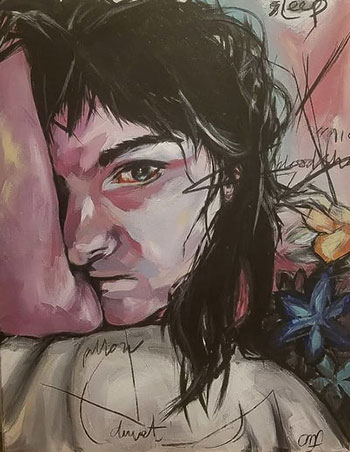
Life After Domestic Sex Trafficking: Survival and Reintegration
In her Ted Talk, Barbara Amaya, a sex trafficking survivor, recounted a nightmare in which she ran away from her abusive home in Fairfax, Regina to the streets of Washington, DC at age 12. She was recruited into sex trafficking by a young woman who had approached her, claiming to understand Barbara’s situation and saying she could help. The woman, who was a victim of sex trafficking herself, had been recruiting other runaways. They sold Barbara to a trafficker in New York who, as Barbara described, “programmed my young mind and knew exactly how to create a commodity out of a human being.”
Domestic sex trafficking involves the use of coercive tactics to force an individual to perform commercial sex within the borders of one country. Victims of domestic sex trafficking are at risk for countless health problems, such as sexually transmitted infections, cancer, infertility, heart disease, and urinary tract infections. Victims also experience severe psychological distress, such as complex PTSD; mood, eating and personality disturbances; and addiction. The damage done by this trauma can last a lifetime.

The struggles that survivors face when reintegrating after having lived as a trafficked person are often overlooked. Megan Lundstrom, a survivor of sex trafficking, explains:
“I think a lot of people lose sight of the fact that just because you’ve received medical care and you’re no longer in jail, you can’t just pat a survivor on the head and say, ‘You’re fixed, go on with your life.’ That’s where the really hard work starts.”
Megan explains that returning after being trafficked, can lead to feelings of social alienation::
“You literally go through a period of culture shock of trying to understand, ‘how do I communicate with people? How do I work in a legitimate, legal job setting? What rights do I have and how do I put forth boundaries?’ All of those things are so new.”
This description resonates with Barbara. After escaping her trafficker at age 24, Barbara found herself lost and uncertain:
“By the time I left, one of the many rules of my trafficker was no reading, no writing to anyone. That amount of isolation made me feel like I was returning from Mars after a decade because I was trafficked from age 12 to 24. I missed so many things that had happened in the real world. I also missed all the milestones of growing up in a loving environment…Nobody knew what to do with me and I didn’t know what to do with me. What was I supposed to do? I guess I’m supposed to get an education. Maybe I’m supposed to find a job? Maybe I’m supposed to get married and have a baby?”
The reintegration process is a complex and multi-faceted process that occurs one step at a time. For both Barbara and Megan, the road to reintegration required making meaning of their experience by helping others transform from victims to survivors. This involved ensuring people are prevented from being trafficked, that law enforcement agencies intervene and extract those who are already victims of trafficking from that life, and that survivors are supported while transitioning after having been trafficked.

Barbara was in a very dark depression:
“A newscast came on. I wasn’t really watching it; I was just lying here. They were talking about human trafficking…in northern Virginia and it was a very large case. I don’t remember ever having heard that term: human trafficking. I had heard the term ‘drug trafficking,’ but not human trafficking. And then they started talking about the recruitment techniques that traffickers use and then I stood up and I had a true epiphany, a true “ah-ha” moment. I sat up and for the first time I self-identified as a victim and I went, ‘What?’ They were describing what had happened to me, how traffickers were treating young women – that had happened to me, and it’s still happening to others. This caused a lot of emotions. One of them was anger. And I just wanted to do something. I had a vague idea of helping women run away. I wasn’t sure what I wanted to do. But within 2 weeks, I was sharing my experiences on that safety channel and videos on my website, and I was just propelled forward.”
Likewise, Megan started speaking out about what was happening in her community in northern Colorado after feeling compelled to raise awareness about the hidden signs of domestic sex trafficking:
“Part of my exploitation happened up at the oil fields in North Dakota…When I moved back to Colorado in 2012, it was kind of the height of the oil boom in northern Colorado, and state-wide. I started doing my research because there was a hotel being built across the street from my house to house all of these oil field workers who were coming in temporarily. Because of my experience in North Dakota, I knew what that meant. It really started to bother me as I moved forward in my healing…And I was getting to a place where I felt I really needed to speak out in my community about what this hotel symbolizes to me, and maybe I was seeing what other people weren’t necessarily seeing because they didn’t have those experiences.”
Barbara’s epiphany led her to share her story on various news outlets, college campuses, and women’s organizations, and this exposure resulted in her being called upon by law enforcement to assist in training police officers. Barbara also wrote a book, Nobody’s Girl: A Memoir of Lost Innocence, Modern Day Slavery & Transformation, which contains a guide for teachers, health and medical personnel, law enforcement, and young men and women about this topic. She also created a graphic novel, The Destiny of Zoe Carpenter, which is a human trafficking educational resource for middle and high school students.
Like Barbara, Megan began speaking at different groups and realized that others had also had experiences like hers. She found that very few agencies were aware that sex trafficking was happening in their communities. Megan also discovered that there were no services or trained individuals specifically serving this unique population. Recognizing this limitation, in 2014, she founded Free Our Girls, an American non-profit organization that has worked to create various resources, including awareness, prevention, and response training curriculums for survivors, professionals, and middle and high school level students, as well as outreach, intervention and restoration services for victims and survivors.
Of course, survivors from domestic sex trafficking need much help to reintegrate. Finding a sense of purpose after such tragic experiences can be a pivotal moment for those who want to recover from trauma.
-Riana Fisher, Contributing Writer
Image Credits:
Feature: Richard George Davis, Used with Permission
First: Richard George Davis, Used with Permission
Second: Charli Forrester, Used with Permission




This article is very helpful and grateful. Thank you for sharing awesome article.
Sobbed while reading this. Thank you. Tough night sitting by the window smoking far too many cigarettes and it was nice to finally read some truth. My experience is tiny compared to both of yours but thank you for this. I needed to hear it.